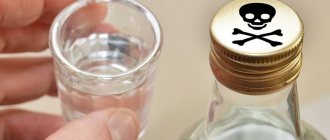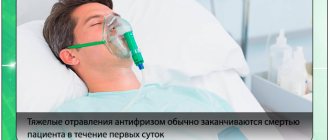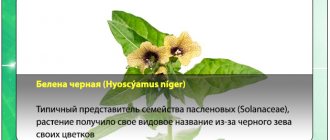Metals are a group of substances that have similar structure, physical and chemical properties. They surround us in everyday life, nature, and are used in production. The ingot or metal shavings do not act as a toxic agent. Heavy metal poisoning occurs upon contact with their salts. Soluble or volatile substances can easily enter the human body if safety precautions are violated.
Antidotes
Antidotes are substances that can inactivate, bind and safely remove heavy metal atoms from the body. At the present stage of medical development, there are no antidotes for some toxic substances.
Antidotes for heavy metals.
| Poisonous substance | Antidote |
| Cadmium | EDTA, Dimercaptosuccinic acid (in clinical trials). |
| Iron | Deferoxamine. |
| Lead | Calcium salt EDTA, Cuprimin, Succimer. |
| Mercury | Polythiol resins for binding metallic mercury. D-penicillamine or Dimercaprol for poisoning with salts and vapors, Unithiol. |
| Thallium | Dithiocarb. |
| Copper | EDTA, Cuprimin, Trientin. |
Additionally, glucose, magnesium preparations, and sodium thiosulfate are used as antidotes.
Detoxifying at home
Egg white is considered an effective antitoxic agent when the body is exposed to heavy metal salts. It is used in particularly difficult cases when it is necessary to stop the spread of toxins through tissues and organs. To prepare the medicine, take a dozen eggs, separate the whites from the yolks, and then mix them with two glasses of milk. Drink the egg-milk mixture in small portions over an hour, this will help bind toxins and remove them through the intestines.
Effectively absorb and remove heavy metals from the body:
- Pectin. When it enters the body and swells, it absorbs decay products, harmful substances and toxins. A high content of pectin is found in apples, beets, black currants, peaches, and apricots. Among vegetables, carrots and cabbage will be useful. Pectin is also preserved in jelly, marmalade, and jams. In case of poisoning, as soon as the acute period of vomiting and nausea passes, the patient is given as many products containing pectin as possible.
- Fiber is considered a stimulant of intestinal function, which helps remove heavy metal salts from the body. A lot of it is found in dates, corn, buckwheat, pumpkin, and raspberries. These products are given to the patient when the acute period of symptoms of poisoning has passed.
- Effectively removes heavy metal salts from the skeletal system and prevents the accumulation of calcium. Sesame, almonds, beans, and dairy products are rich in this microelement. In case of extensive damage to the body by heavy metals, these products should become an indispensable component of the daily diet.
- Selenium neutralizes the effects of heavy metal toxins and removes poisons from blood vessels. This microelement is found in garlic, eggs, and olive oil. Against the background of the onset of remission of the disease, the patient includes these foods in a systematic meal.
- In case of lead poisoning, the patient is given an increased amount of vitamin D with food. The victim is given fatty fish, milk and dairy products. You should not ignore vitamin C, which stimulates the immune system and thereby reduces the toxic effect of heavy metals. A lot of it is found in cabbage, citrus fruits, and black currants.
- During the period of stable remission, the patient should eat as much blackberries, rose hips, tomatoes, cherries, and cherries as possible. These products contain vitamin P, which helps remove heavy metal toxins from the body.
- In addition to a properly balanced diet, doctors and traditional healers recommend taking special balanced vitamin and mineral complexes, which can be purchased at pharmacies.
Further treatment
Further treatment tactics depend on the severity of the damage to the body. When intoxicated with heavy metals, there are 3 degrees of poisoning - mild, moderate and severe.
Principles of therapy for heavy metal intoxication:
- Increase diuresis - for speedy evacuation of the toxin. Drip administration of sodium chloride and glucose solution is indicated.
- Administration of antidotes - the medicine is selected depending on the type of toxic agent. Indicated for manifestations of intoxication of any severity.
- Symptomatic treatment - to normalize the functioning of organs and systems, measures to prevent toxic shock. Painkillers, antispasmodics, and hormonal agents are used.
- If the skin is damaged, use ointments and local antibiotics.
- Hepatoprotectors to protect the liver.
- Vitamin complexes.
- Dialysis.
Duration of treatment
If the degree of poisoning is not severe, therapy takes 1-2 weeks. In particularly difficult cases, recovery will require at least 2 months, followed by a recovery period, which also takes quite a long time. It is also necessary to take into account that in case of poisoning, the functions of some organs most affected by intoxication (liver, nervous system, kidneys) may not be fully restored, since heavy metal poisons often affect the body with the development of irreversible processes.
Emergency rules
The first aid method depends on the type of toxin and the method of entry into the body. The general rule for any poisoning is to stop contact with the poison.
- in case of inhalation injury, take the victim to fresh air;
- In case of contact with skin, rinse with plenty of running water. Treatment duration is at least 15 minutes;
- if swallowed, rinse the gastrointestinal tract with an alkaline solution of baking soda. It is better to carry out the procedure using a probe. Before the ambulance arrives, vomiting, especially in a child, is caused by pressing with your fingers on the root of the tongue;
- Be sure to give a laxative. The best choice is petroleum jelly or ricin fat.
Treatment and antidote
As noted above, you cannot self-medicate for heavy metal poisoning; urgent hospitalization is necessary! Doctors will conduct a chemical blood test, use special diuretics to remove toxins from the body, relieve pain, eliminate symptoms of poisoning, prescribe a diet and, most importantly, accurately identify the dangerous substance and select an antidote.
The use of an antidote depends on the type of toxic substance: for arsenic poisoning, thioctic acid is used; antimony – ethylenediaminetetraacetic acid; if mercury affects the body, Unithiol will help; if the poisonous drug is lead, use D-penicillamine.
On average, in normal cases, treatment takes 2 to 3 weeks. But if the poisoning is severe, the process drags on for several months. At the same time, there is a possibility that the functioning of internal organs and systems may not be fully restored.
Symptoms and signs
Poisoning with heavy metal salts occurs through oral or inhalation intake of toxic substances. Mercury can penetrate the skin.
Signs of intoxication vary depending on the toxic substance, but common symptoms of poisoning with heavy metal salts are:
- hyperemia of the mucous membranes of the mouth and throat;
- nausea;
- vomit;
- pain in the epigastrium and along the esophagus;
- bowel dysfunction (diarrhea, constipation);
- the appearance of areas of erosion in the oral cavity;
- bleeding in different parts of the gastrointestinal tract;
- metallic taste in the mouth;
- pressure surges;
- cyanosis;
- fever;
- chills;
- decrease in body temperature;
- disturbance of higher nervous activity - from euphoria to hallucinations, development of lethargy, coma;
- if the kidneys are damaged, renal failure develops and urine output may stop;
- change in blood formula - increased ROE, leukocytosis, hemolysis;
- change in the amount of liver enzymes ALT, AST;
- cough, development of airway obstruction due to inhalation poisoning.
When inhaling mercury and lead vapors, loss of teeth is observed, hypersalivation and bleeding gums are present. If the vomit has acquired a blue tint, then the cause of intoxication is the ingestion of copper salts.
Excess chromium damages nasal cartilage. Thallium salts provoke the development of alopecia, cerebral edema, and muscle disorders.
Antidotes are substances that can inactivate, bind and safely remove heavy metal atoms from the body. At the present stage of medical development, there are no antidotes for some toxic substances.
Rehabilitation period
In general, treatment for poisoning with heavy metal salts is quite long and complex. But even after stabilizing the patient’s health, it is necessary to undergo a rehabilitation period.
Firstly, if the condition in question was caused by the characteristics of work activity (for example, the patient works in some specific industry), then he will have to change his field of activity.
Secondly, periodically (at least once every 6 months) the victim must visit medical institutions and undergo a full examination - quite often poisoning with heavy metal salts leads to the development of complex pathologies.
Thirdly, even during recovery, you should not abuse unhealthy foods or alcoholic beverages - a nutritionist will help you adjust your diet.
The rehabilitation period for poisoning with heavy metal salts involves undergoing sanatorium-resort treatment - you need to focus on stabilizing and completely restoring the functioning of the gastrointestinal tract, and if the “blow” falls on the central nervous system, then you will need to visit specialized sanatoriums and restore its functioning .
Poisoning with heavy metal salts is a rather dangerous condition, which in the absence of qualified medical care can lead to death. Therefore, it is strictly not recommended to ignore the symptoms indicated in the article.
Tsygankova Yana Aleksandrovna, medical observer, therapist of the highest qualification
23, total, today
( 193 votes, average: 4.60 out of 5)
First aid for frostbite
Respiratory failure: classification and emergency care
Related Posts
Clinical picture of heavy metal poisoning
Different heavy metals affect the body in different ways. The manifestation and severity of symptoms depend on the duration of contact with the poison, the concentration of heavy metals and the age of the poisoned person.
Please note that children are more susceptible to heavy metals. Poisoning in them can be caused by minimal amounts of these substances.
With heavy metal poisoning, symptoms may appear immediately or after several days. With prolonged contact with these substances, clinical manifestations develop gradually.
We recommend reading: Allergic rash on the face: photos, causes and how to remove acne
The table below presents the clinical picture of metal poisoning, symptoms characteristic of intoxication by different types.
| Metal name | Characteristic symptoms and features of the clinical course of poisoning |
| Mercury | In acute poisoning, signs of intoxication appear during the first 2-3 hours. Symptoms:
|
| Lead | Lead intoxication most often occurs in a chronic form and is manifested by the following symptoms:
|
| Copper | In case of acute intoxication, symptoms develop during the first two days. These include:
|
| Antimony | You can become poisoned by antimony by inhaling it or accidentally eating it. Characteristic symptoms:
|
| Thallium | Thallium is a highly toxic substance for the human body. It can be absorbed into the blood even through the skin. Symptoms of acute poisoning increase in the first days after contact with it. These include:
|
Heavy metals are widely used in production, medicine and everyday life. If they are used incorrectly, acute or chronic poisoning can develop, in which serious changes occur in the functioning of the entire body. This article examines in detail heavy metal poisoning, the causes and mechanisms of its development, symptoms and clinical signs, methods of first aid and its treatment.
Prevention
Prevention of heavy metal poisoning is as follows:
- compliance with safety regulations at work;
- compliance with safety precautions when disposing of broken thermometers;
- refusal to use copper utensils;
- eating only those products that were grown in ecologically clean areas;
- filtering and boiling drinking water.
It is important to always remember safety precautions
In general, this type of poisoning is rare. As a rule, such cases are the result of technical accidents. Therefore, prevention should be approached with a dose of common sense. The price of an overly cautious approach to life is the absence of many pleasant moments for every person.
What are the dangers of chronic intoxication with heavy metals?
Poisoning and intoxication with heavy metals leads to damage to many organs and systems. The central nervous system is primarily affected. Many changes may be irrevocable.
Below are the most common pathologies and complications of chronic heavy metal intoxication.
- Brain damage can manifest itself as memory impairment, seizures, and mental disorders. Mental development is impaired in children.
- Toxic hepatitis is liver damage caused by poisons and toxins. It increases in size and loses its functions. A person may develop yellowing of the skin and pain in the right hypochondrium.
- Acute liver failure is the most common complication of metal intoxication. The kidneys lose their ability to cleanse the blood, there may be a lot of urine (more than 5 liters per day) or not at all.
- Acute anemia due to hemolysis. Upon contact with toxic substances, red blood cell breakdown may occur.
Signs of mercury poisoning from a thermometer
It should be remembered that the penetration of mercury (or rather its vapor) through the respiratory tract is most dangerous to human life and health. In this case, damage occurs primarily to the target organs: the brain and kidneys. When vapors of this metal penetrate into the body, the functioning of the central nervous system is disrupted. The toxic substance settles on the kidneys and disrupts their functioning. The organs of the respiratory system are also susceptible to the negative effects of mercury.
Their mucous membrane becomes inflamed, and damage to blood vessels may occur (hemoptysis occurs). In severe cases, swelling of the lung tissue is observed. With prolonged exposure to this substance on the body, metabolic disorders are observed, as well as the development of multiple chronic pathologies. The danger of mercury is that it can accumulate in the body (it is extremely difficult to remove).
Main causes of heavy metal poisoning
Poisoning with heavy metal salts most often develops when the rules for their use in production or at home are not followed. The following heavy metals most often cause intoxication in humans:
- mercury;
- lead;
- zinc;
- copper;
- nickel;
- antimony.
Poisoning with heavy metal salts can occur when ingested or inhaled.
Please note that arsenic is also dangerous to humans. It belongs to the semimetals, is part of some ointments, poison for insects and rodents.
Intoxication with heavy metals can develop after a single contact with a toxic substance or as a result of prolonged work with it. Chronic poisoning with salts of heavy metals most often occurs in people who use them at work.
Also, some heavy metals are used in medicine. They are part of ointments that help with purulent lesions of the skin. Improper use of these medications can lead to toxicity.
Below are the most common pathologies and complications of chronic heavy metal intoxication.
Development mechanism
The main cause of this disease is industrial accidents.
Symptoms of heavy metal poisoning occur in people working in the chemical industry, as well as in areas where hydrocarbons are burned. Violation of safety precautions and the absence of air filters on chimneys leads to the development of chronic forms of intoxication with toxic elements, including lead.
Heavy metal vapor poisoning can also occur at home. Practitioners usually encounter mercury intoxication, which develops when improperly removing liquid metal from a broken thermometer (see Is mercury poisoning possible from a thermometer?), as well as when attempting to self-medicate with drugs containing mercury.
Salts of heavy metals are widespread in the modern world. The largest amount of them is found in industrial wastewater, as well as in vegetables and fruits grown in environmentally unfavorable areas (near enterprises, sewage canals, roads). Consumption of such water and food leads to the accumulation of salts in the body and the development of chronic poisoning.
Industrial Zone
Acute poisoning with heavy metals and their compounds develops, as a rule, during industrial accidents associated with the leakage of large amounts of toxicant. At the same time, people who are trying to eliminate or reduce the consequences of a leak before the arrival of special services suffer. As a rule, such attempts are made without using the necessary protective equipment.
Table of permissible content of heavy metals in food consumed per day:
| Metal | Permissible concentration in mcg |
| Mercury | 0.05 |
| Cadmium | 70 |
| Copper | 120 |
| Cobalt | 50 |
| Lead | 0.15 |
The first symptoms of metal poisoning
Although each heavy metal has its own unique properties and effects on the body, the initial stages of poisoning can be similar. First of all, it is characterized by the appearance of a metallic taste in the mouth. Further, it may be pain in the throat and mucous membranes, while swallowing or inhaling oxygen. In this case, the classic symptoms of poisoning also appear: nausea, dizziness, vomiting, loose stools.
We recommend reading: Hungry stomach pain: causes, symptoms and treatment
Mercury and zinc cause another property - darkening of the gums in the form of dark stripes that can be around the teeth. Also, poisoning with metal salts does not exclude bleeding, the appearance of ulcers on the mucous membranes and unstable pressure. You should also pay attention to vomiting; in some cases it acquires a characteristic bluish tint. With active exposure to toxic fumes, the eyeballs may be damaged, pain and lacrimation will appear.
Sources of heavy metals
Heavy metals are constantly encountered in everyday life: they are part of household chemicals, gasoline, paints, and are used in the creation of medicines. Hazardous substances are everywhere: in living organisms, trees, the atmosphere, even in the air we breathe! The most dangerous areas are considered to be areas near nuclear, oil refineries and waste incineration plants.
We often don't think about heavy metals until we hear on the news about exceeding acceptable levels or until we are directly confronted with the danger. Remember, not only metal is dangerous, but also its combination with other substances. Poisoning with heavy metal salts causes significant harm to the body. They penetrate through the respiratory system, skin, along with food into our body.
Sciences that study the effects of harmful metals include toxicology and biochemistry. According to their provisions, the following elements are recognized as the most dangerous in terms of their effects on the body:
- Arsenic;
- Mercury;
- Copper;
- Antimony;
- Lead;
- Thallium.
Contact with zinc, iron, nickel and steel is also harmful. The effects of heavy metals on the human body vary. If the amount of toxic substances was in large doses or in high concentrations, the first signs will appear quickly along with pronounced symptoms (acute poisoning, headaches). In this case, there are often cases when there is no immediate reaction, but over long-term exposure, toxins “accumulate” in organs and tissues.
The list contains common examples of sources of dangerous poisoning:
- Industrial emissions into the atmosphere.
- Car emissions, especially in large cities or near major highways.
- Contact with petroleum products for a long time (for example, working at a gas station).
- The use of pesticides in agriculture and their accumulation in manufactured products.
- Overdose of drugs.
- Passive smoking.
When in contact with humans, heavy metals cause harm to the entire body. Their impact especially affects the functioning of the heart, gastrointestinal tract and endocrine system.
Help with poisoning with heavy metal salts
As soon as the first symptoms appear, the person needs to be provided with the most optimal antidote - salted water with ipecac root. This tincture will help induce vomiting, ridding the body of toxins a little. But in more severe cases, egg whites beaten with milk are best. The proportions for this cocktail are 12:2, which means twelve egg whites to two glasses of milk.
Each of these remedies is aimed at inducing vomiting and complete bowel movement, ridding it of toxins. But next you will need to do an enema using clean water. Naturally, due to such operations, the victim becomes dehydrated, which must be prevented by giving him a glass of milk or soda water. Drinking plenty of fluids will help remove toxins from the body faster. If you have medical supplies at hand, then a universal antidote for this purpose is Unithiol, which also helps in cleaning.
After first aid is provided, the injured person is treated in a hospital. The patient is given a large amount of cleansing drugs, which are often diuretics, by intravenous drip. In this way, the body is naturally cleansed of heavy toxins.
Complications and consequences
With prolonged or severe intoxication, pathomorphological transformations in the urinary system are observed. The kidneys undergo necrosis, and degenerative processes occur in the renal epithelium. Foci of calcification and interstitial inflammation develop. On macroscopic examination, the kidneys are enlarged and acquire a light tint (the so-called “sublimate kidney”).
If hemolysis develops, then a clinical picture of acute toxic nephrosis is observed.
The liver suffers: widespread centrilobular necrotic foci appear, and bile stagnation is noted. Hemolysis is characterized by pigmented hepatosis with necrotic foci.
In severe cases, if assistance is not provided, the victim dies.
[25], [26], [27], [28], [29], [30], [31]
First aid
Professional assistance can only be provided by specialists in the toxicology department, where victims are taken. Treatment should relieve shock and eliminate the symptoms of heavy metal poisoning - only after this the doctor will prescribe a course to restore the functioning of the organs and systems of the body.
Properly provided first aid in case of poisoning will help prevent some complications:
- If the element is ingested by airborne droplets, the poisoned person must be removed from the danger zone.
- If poisoning occurs by contact, it is necessary to thoroughly rinse the affected area.
- Gastric lavage is necessary if the toxin enters the body with food. It is best not to do the procedure yourself, as some poisons can cause a cauterizing effect and, as a result, the digestive system will be seriously damaged. To cleanse the stomach, you need to give Vaseline or castor oil.
Doctors who arrived at the scene of the incident administer drugs to the victim to regulate the functioning of the heart and respiratory system, after which they carry out standard procedures. Next, the patient is taken to the hospital for examination and treatment. When the metal causing the poisoning becomes known, an antidote is administered.
General signs
There are also common symptoms of heavy metal poisoning.
- Changes in blood pressure, during which the patient’s face turns pale or red, and shortness of breath is observed.
- Disruption of the nervous system, which is expressed in an excited, euphoric state, or, conversely, dulling of consciousness, the onset of coma.
- Impaired motor functions: cramps in the arms or legs, paralysis, changes in gait and coordination.
- Visual hallucinations, double images, blurred vision;
- sleep disturbance.
- Nephropathy, which is characterized by severe impairment of kidney function, in some cases with an attack of renal failure.
- Impaired liver function, which often increases in size during poisoning.
- Changes in the biochemical characteristics of the blood, destruction of red blood cells, anemia (ICD 10 D50), leukocytosis.
In severe metal poisoning, the patient may develop toxic shock, even death. Sudden loss of consciousness is often observed when a person requires urgent hospitalization and first aid.
Where do heavy metals come from and how to determine poisoning
During weathering and erosion, rocks actively release heavy metals into the environment in the form of dust. Some elements come from space and meteorites. Most of the sources are created by man: mines, dishes, seals, cigarettes, exhaust gases, etc., as a result of which several tens of tons of harmful substances enter the atmosphere every year.
Despite the fact that poisoning with each substance has its own signs and consequences, all heavy metals have common points. Common complaints during intoxication:
- nausea;
- pain in the gastrointestinal tract;
- bleeding;
- ulcers in the oral mucosa.
Depending on the type of metal that has entered the body, the following symptoms of poisoning are distinguished:
- mercury poisoning causes problems with the kidneys, liver, gastrointestinal tract and nervous system - characterized by pain in the abdomen, a metallic taste in the mouth, and stool instability;
- lead poisoning affects the functioning of the nervous system, liver, kidneys - a gray-green tint to the skin, a blue-purple stripe along the edge of the gums are noted;
- poisoning with arsenic metal salts causes chest pain, hemoptysis, lacrimation, problems with nails and hair, dry skin;
- Antimony and cadmium poisoning results in headaches and dry skin.
We recommend reading: Propolis for cough: adults and children, use of tincture for gargling.
Heavy metals negatively affect all organs and systems of the body, causing the following symptoms in humans:
- shortness of breath, hyperemia, changes in blood pressure - as a result of problems with the cardiovascular system;
- note insomnia, paralysis, euphoria, convulsions due to malfunctions of the nervous system;
- possible renal failure;
- the liver increases in size;
- vision problems occur.
Even with timely medical care, some of the consequences of heavy metal intoxication will be irreversible, and the person may remain disabled. Severe poisoning with a heavy metal dangerous to humans often results in death or exotoxic shock.
Heavy metal poisoning occurs if an excessive dose of an element enters the body. More than 40 heavy metals are known, which are also found in everyday life. It is necessary to know the symptoms of heavy metal intoxication, first aid rules and the stages of rehabilitation after poisoning.
Poisonous metals
Heavy metals are chemical elements with specific characteristics. They are extremely toxic to all living things. It is believed that if a person does not live in a large city, near large industrial enterprises, or does not work in hazardous industries, then the likelihood of poisoning with such substances is very low. However, in reality this is not the case. Most often, heavy metal poisoning occurs when hazardous chemicals are used incorrectly or safety precautions are violated. These chemical compounds are also dangerous in other situations. For example, due to the carelessness of adults, children often suffer when fertilizers, medicines, gasoline, and paint are improperly stored.
People who drink contaminated water, cook or store food using tin utensils, eat foods that contain pesticides, and even breathe air saturated with car exhaust can also become victims of poisoning. As a result, dangerous substances begin to gradually accumulate in the body, and a person has no immunity against them. The body weakens and symptoms of chronic poisoning develop - first mild (in the form of fatigue, malaise), then more characteristic, which depends on the type of toxin.
What metals can cause poisoning?
Heavy metals have varying levels of toxicity. The most dangerous for humans are nickel, mercury, lead, antimony, and zinc. Their fumes can easily cause poisoning at work or as a result of an accident. Substances are contained in mixtures that are intended to kill pests. Tobacco smoke, drugs, petroleum products and many other products contain heavy metals.
Intoxication is possible after the element enters the body through the skin, by air or through the digestive system (along with food). All internal organs and systems, from blood vessels to the heart, suffer from poisoning.
During treatment for poisoning, a person must follow the following diet:
How is the treatment carried out?
Enterosorbents
Therapy will depend entirely on what substance the patient was poisoned with, although the stages of treatment are identical:
- Identify the metal that caused the poisoning. This is necessary to choose the right antidote for poisoning with heavy metal salts.
- The patient should receive plenty of fluids and medications or enterosorbents to remove harmful substances through the kidneys.
- A full examination to determine the damage done to the body and get a picture of the consequences.
- The use of folk remedies is permitted only if it does not interfere with the main course of treatment, and the actions are agreed upon with the doctor.
During treatment for poisoning, a person must follow the following diet:
- Fish and meat should be steamed and then chopped, but not to a puree state.
- Milk and fermented milk products are allowed.
- Vegetables and fruits can be consumed - fiber helps remove harmful substances.
- Fruit drinks, juices and decoctions are allowed - any liquid helps remove poison from the body.
- Coffee, strong tea and alcohol are prohibited.
The sooner after intoxication a person receives help in an inpatient toxicology department, the faster the body recovers and the less chance of developing serious complications. If you conscientiously follow the doctor’s recommendations, after a month the person is discharged home.
Forecasts and recovery
Recovery from the acute form of the disease in its mild and moderate form takes 10-15 days. Severe intoxication often requires hospitalization for 1-2 months, but even after this, complete recovery may not occur. Some symptoms (tremor, nervousness) persist throughout life.
The situation is similar with chronic forms of the disease. A complete cure for such patients is almost impossible. The intensity of symptoms can be significantly reduced, but it is impossible to completely eliminate the consequences of lead or mercury poisoning.
Pathogenesis
Heavy metals are a number of chemical elements that are highly toxic to all living things. Moreover, you can get poisoned without even living in a metropolis or near large enterprises, and without encountering industrial “hazards.” According to statistics, most heavy metal poisonings are associated with careless use of household chemicals, disregard for safety precautions, and suicide attempts.
But that's not all: heavy metals can be found everywhere. Children are often poisoned, usually through the fault of adults who do not pay due attention to safety. In places accessible to children, many store both medicines and household chemicals, varnishes, solutions, and fertilizers.
People who eat unwashed plant foods, drink untreated water, and use containers not intended for storing food can also suffer from poisoning. As a result, toxic components accumulate in human organs and tissues, and the immune defense against them is powerless. Gradually, the body's resources are depleted, and signs of intoxication are detected - first mild (for example, unmotivated fatigue), and then - typical for each individual metal.
The most toxic are heavy metals such as lead, mercury, thallium, copper, antimony, zinc, cadmium, nickel, and bismuth.
[13], [14], [15], [16], [17], [18], [19], [20]
First aid and treatment
First aid is provided to the victim before the arrival of doctors. Further treatment measures are carried out in an ambulance and in a hospital. In case of chronic poisoning, assistance is not provided at DGE. Treatment is carried out on an outpatient basis.
First aid
At the prehospital stage, doctors rinse the victim’s stomach through a tube if the toxin has entered the body through the gastrointestinal tract. In case of transdermal poisoning, the remaining poison is removed from the skin.
If inhalation poisoning has occurred, specialists perform inhalations with hormones to relieve swelling of the airways. If necessary, the patient is intubated or a conicotomy (microstomy) is performed.
Note: conicotomy is a puncture of the cricothyroid membrane to ensure ventilation of the lungs. Outwardly, it looks like piercing the throat in the upper part with a special instrument, followed by insertion of a breathing tube. In “field” conditions it can be done using a ballpoint pen or 3-4 thick needles.
Next, the patient is given symptomatic therapy. Hormones are administered to stabilize the condition, painkillers and hemostatic agents. For psychomotor agitation, psychotropic medications and benzodiazepines (Relanium) are indicated.
Treatment of intoxication with medicinal herbs
Healers also include decoctions of medicinal plants and herbs as antitoxic folk remedies. Doctors recommend using them for mild forms of poisoning, when the effect of toxins does not have time to deeply affect the organ systems. Recipes for medicinal tinctures and decoctions involve the use of pharmaceutical herbs and the preparation of decoctions according to a certain algorithm.
- An infusion of horsetail is considered an effective folk remedy for poisoning with heavy metal salts, including lead. It is prepared in the following ratio: take twenty parts of boiling water to one part of herb and leave for 20 minutes. The decoction is given to the patient half a glass every three hours.
- An infusion that neutralizes heavy metal toxins in the body is prepared from knotweed herb. 2 tablespoons of the herb are poured into 500 ml of boiling water and left for 2 hours. Give the patient half a glass every 3-4 hours.
- The raw materials for Rhodiola rosea decoction are purchased in the pharmacy chain in the form of an alcohol tincture. It should be taken according to the following scheme: in the morning and afternoon, dilute 10 drops of tincture in half a glass of warm water. In the evening, add one tablespoon of honey, which is diluted in the finished tincture.
- Sunflower is considered an effective antitoxic agent. To prepare a medicinal tincture, take the reed flowers and leaves of this plant at the rate of one tablespoon per 800 ml of boiling water. Add a tablespoon of horsetail herb and leave for half an hour. The patient is given half a glass every 3 hours. This infusion removes cobalt and strontium salts from the body.
- Copper and lead salts are removed from the body by the following medicinal mixture: horsetail and clover take 5 tablespoons each, 2 tablespoons of oak bark are added to them. Measure out 3 tablespoons, pour a liter of boiling water, leave for an hour. The patient is given half a glass 7 times a day at regular intervals.
- Symptoms of chronic mercury poisoning are relieved by a medicinal mixture of horsetail, taken in the amount of 5 tablespoons and 3 tablespoons of crushed walnut kernels. Measure out 2 tablespoons of the mixture and pour in 1,200 liters of boiling water. Insist the collection for one hour, take half a glass 6 times a day at equal time intervals.
- In case of toxic damage from salts of heavy metals to the liver, elecampane root helps. 20 g of crushed root is poured with a glass of boiling water and left for 20 minutes. The patient is given one tablespoon every 3 hours before meals.
- Dandelion is considered a remedy known to be an effective antitoxic agent. Take 6g of dried dandelion, pour a glass of water, boil for a quarter of an hour, then leave for half an hour, filter. Bring the volume of the decoction to the original volume, take a tablespoon 3 times a day before meals.
- For poisoning with heavy metal toxins, use anise decoction. To prepare a medicinal decoction, take 350 ml of water, add 15 anise fruits to it and boil for a quarter of an hour. After taking the first portion, traditional healers recommend inducing vomiting in the patient, after which they give another portion. The initial volume of the decoction is divided into two doses, then another portion is brewed, which the patient takes in two doses over 6 hours.
- Antitoxic collection includes collection of anti-inflammatory herbs and herbs with antibacterial action, taken in equal quantities. One tablespoon of the mixture is poured into two glasses of boiling water and left for 30 minutes. Take 75 ml of this decoction every hour.
Sources of intoxication
Toxic metal compounds can enter the body in different ways. For example:
- in case of accidents and emergency situations at chemical industry enterprises, when the maximum permissible concentration of toxic metals and their salts in the environment increases;
during the daily activities of chemical and heavy industries, the content of these elements in urban plants and soils passively increases;- picking mushrooms, berries and various herbs in areas located near major highways. Car exhaust contains toxins;
- overdosing of medications containing the compounds in question;
- failure to comply with safety measures when using pesticides, herbicides, insecticides and ratacids;
- when using lead-based paints (lead white) and chromium.
Most often, toxic metals and their salts enter the body through the digestive tract, skin and respiratory system (by inhaling volatile mercury, for example). In this case, systemic damage to the body occurs, the liver and kidneys, organs of the endocrine and circulatory systems suffer. Due to the ability to accumulate in various tissues, the risk of heavy metal poisoning increases.
Features of intoxication with various metals
Each toxin has its own characteristics of the course of poisoning, which can facilitate diagnosis and adjust therapeutic measures with timely identification of the element that caused the resulting pathological condition of the body.
| Type of metal | Specific symptoms |
| Lead | Severe disorders of the central nervous system, poisoning is worse experienced by women, especially their reproductive system. |
| Copper | They have a detrimental effect on the nervous and renal systems, and also affect the liver. |
| Mercury vapor | Respiratory system disorders: severe cough, suffocation. Severe headache and dizziness, microconvulsions and fainting. |
| Antimony | Loss of appetite, itching and inflammation of the oral cavity affect the female reproductive system. |
| Thallium | Hair loss, PNS and cardiovascular disorders. |
| Arsenic | Systemic damage to the body. |
| Cobalt | Cardiovascular system disorders, hearing loss. |
| Cadmium | Loss of appetite, impaired absorption in the renal tubules, weakens bones and muscles, systemic damage to the body's organs. |
| Zinc | Anemia, hearing loss. |
| Chromium | General decrease in immunity, disruption of the absorption process. |
| Manganese | High fatigue and drowsiness, lethargy and depression. |











